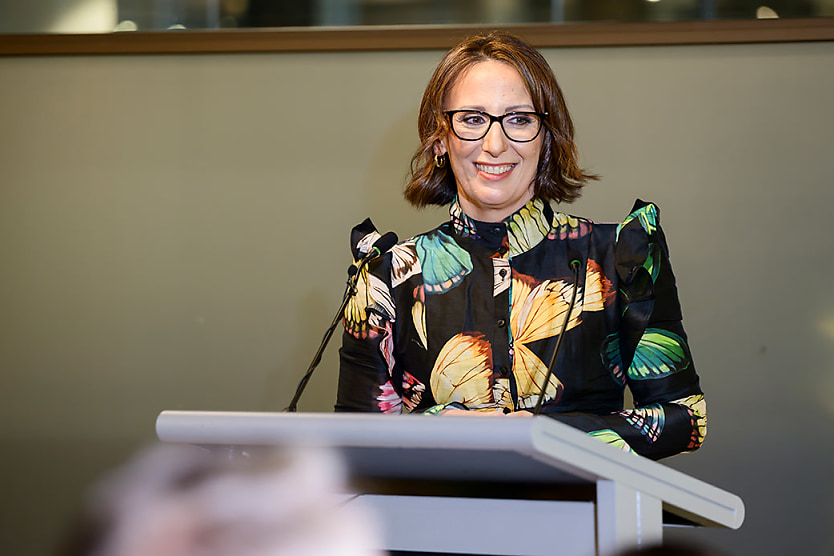WHS requires a more holistic approach, says law firm partner
SHARE THIS ARTICLE

The drastic change that the workforce has undergone in recent years has prompted new ways of operating. One aspect that could use a shake-up is the health and safety space, and according to experts, a more holistic approach could be what is needed.
The definition of workplace health and safety has expanded. Lines have become blurred between home time and work time with the rise of flexible working arrangements. Meanwhile, according to Fay Calderone, a partner at national law firm Hall & Wilcox, social impacts have further distorted the definition.
“We are appreciating, increasingly, both as employers, as society, and certainly in terms of focus of regulators that work health and safety is not just about trip hazards and testing and tagging. The psychosocial hazards that are ever present in Australian workplaces or workplaces around the globe, particularly in a post-pandemic era, are more heightened and more real and consequential than ever,” Calderone said.
“So, we are definitely looking at it from a safety perspective first and foremost in terms of what Australian workplaces need to do proactively to ensure the health and wellbeing of their workers, in terms of eliminating negative behaviours such as bullying and sexual harassment from the workplace, but also ensuring that we are taking an approach to work that is not burning people out.”
There are a variety of influences pushing desire for a shake-up in health and safety. Calderone pinpointed the right to disconnect as a major one.
“We’ve spoken about the right to disconnect, and ensuring that people aren’t working excessive hours, that people are able to compartmentalise between their work and home life. The struggle in terms of carers responsibilities is very real,” she said.
“There was recently a parents and work survey that showed the excessive stress that carers are under in trying to balance work and care. And it’s trying to adopt a lens that looks at it from a safety perspective, but an intersectional lens that also looks at the legal issues, the leadership issues, but also the fundamentals in terms of humanity on those principles that we’ve worked on, those things that we’ve traditionally engaged with employers about.”
Calderone added: “The gendered violence piece is something that I’m increasingly talking about and I’m increasingly concerned about. Suddenly, in this space, there is definitely a role for employers to play to ensure that people [who] subject to violence at home are safe at work. And safety, of course, encompasses everything from physical safety, ensuring that they are not targeted while they are in the workplace, but also when you look at the risks around the employees that have been subject to violence, maintaining their employment.”
With this expansion of responsibilities for employers, compliance also needs a restructuring. Leaders have more on their plates to ensure these obligations are met.
“Leaders are increasingly under pressure to ensure not only compliance, they’re burdened with and overwhelmed with the need for compliance, as they are also juggling other operational pressures, other financial pressures and other concerns that they have in order to maintain a stable business and ensure the economic and social security and jobs for their people,” she said.
“But I equally do think that leaders are at pains to ensure that their people are safe at work, that they are building diverse and inclusive environments, and that there aren’t incidents of bullying and sexual harassment, for example, or extreme misconduct that is occurring in their workplaces so they can ensure their people are safe.”
“But there is also an increased concern in terms of the accountability that is transparency, that the media has really shun a spotlight on toxic workplace cultures, on the big brands and sexual harassment claims, or big brands and dysfunction that occurs in their workplaces. There is definitely increasing media attention, which, of course, does impact on the reputation not only of the leaders but also boards,” Calderone said.
However, Calderone noted that there is an opportunity to drive better business outcomes through this increased compliance.
“There is obviously a lot of accountability, and people are looking to boards to address these issues, and they are also looking to boards for their failures to address these issues. So, I think there are fear factors in terms of what this is going to do for us from a risk and compliance point of view, and a reputational point of view if we don’t address it. But the more important conversations I try to have with leaders are about the upside of addressing these issues,” Calderone said.
“It’s about doing things beyond baseline and compliance, looking at your purpose and values and inclusion and being uncompromising in the way that you guard those. And if you do all of that, the aim of it is that not only will you have compliance sort itself out, not only will you not have these reputational risks, but you will have a better-performing business and you will have more satisfied customers. So, it’s win-win.”
This conversation will appear on a forthcoming episode of The HR Leader podcast.
